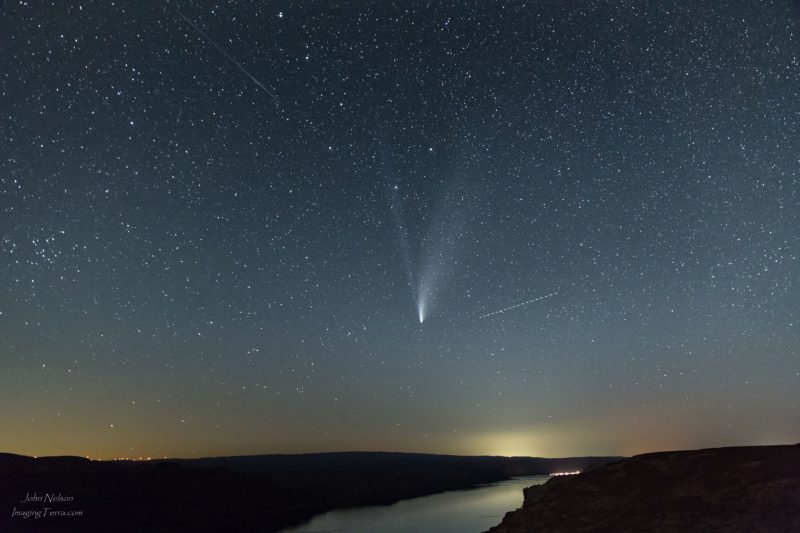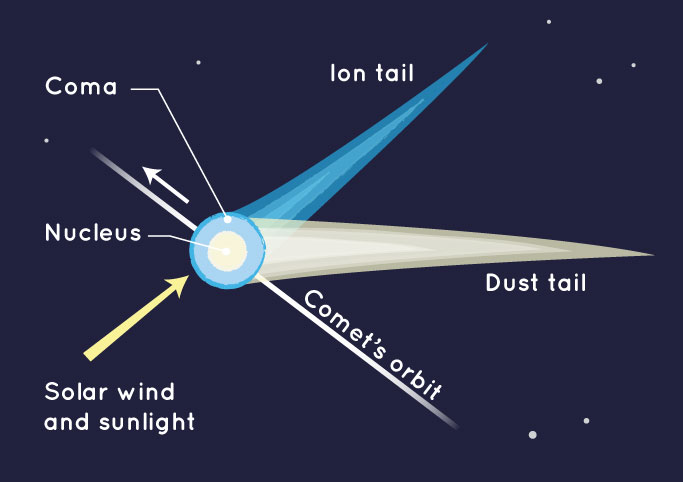
What are comets?
Comets are icy balls of gas, dust and rock that orbit the sun. Astronomers believe most comets are leftovers from the formation of the sun and planets. In fact, comets come from the farthest reaches of the solar system, including the Kuiper Belt and the Oort Cloud. When passing stars outside our solar system jostle comets, the comets begin the long trek inward toward the sun. Then, as they come close to the sun and heat up, they release gas in a process called outgassing. This creates the long, glowing tail that stretches behind the comet and points away from the sun.
The experts on comets
The video above is from the Meet the Experts series of the European Space Agency (ESA). In it, comet scientist Charlotte Götz of ESA discusses comets, their formation and their study. Also, she explains that comet nuclei are relatively small – about the size of a small earthly town – and that they are loosely packed balls of ice and dust.
Moreover, the comets we know about are mostly potato-shaped, but some are more oddly shaped. In addition, it’s only when they come near the sun that comets heat up and spew dust and gases. In fact, they develop giant glowing heads – called a comet’s coma – that may be larger than most planets. And indeed, they sprout their long comet tails that stretch millions of miles long.
NASA says that the current number of known comets is 3,743.
The parts of a comet
The nucleus is the core of a comet. Additionally, it is also the head of the comet. When a comet nears the sun and heats up, some of its frozen surfaces begin to thaw and create the fuzzy coma that surrounds the nucleus.
Surprisingly, a comet can even have two tails. The ion tail is generally bluish in color and points away from the sun because it’s blown back by the solar wind. The ion tail is made of – you guessed it – ions. These are electrically charged gas molecules. The second tail is the dust tail. It is indeed made of dust and normally has a whiter appearance. The dust tail forms a slightly curved trail behind the path of the comet.

Observing comets
Us skywatchers are, of course, most interested in comets when they appear as (sometimes unexpected, often greenish) visitors in our skies. Since comets are most active when they’re near the sun, we tend to see comets shortly after sunset or before sunrise. At such times, comets don’t sweep across the skies as meteors do. But they do move slowly, from night to night, in front of the stars. They can be very beautiful, especially in a dark sky.

Read more about Comet PanSTARRS 2017 K2, which reaches perihelion – closest point to the sun – on December 19, 2022.
Bottom line: Comets are diffuse balls of ice and dust orbiting the sun. They’re sometimes visible in our skies. A comet’s tail may stretch millions of miles across space.











